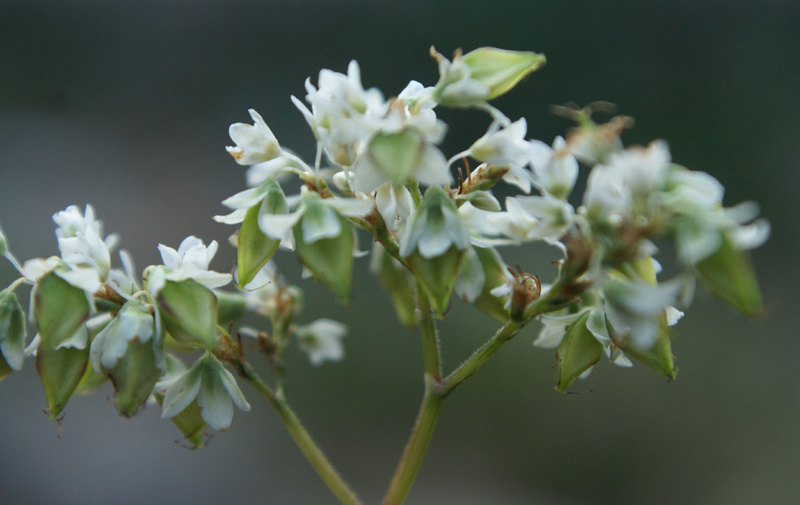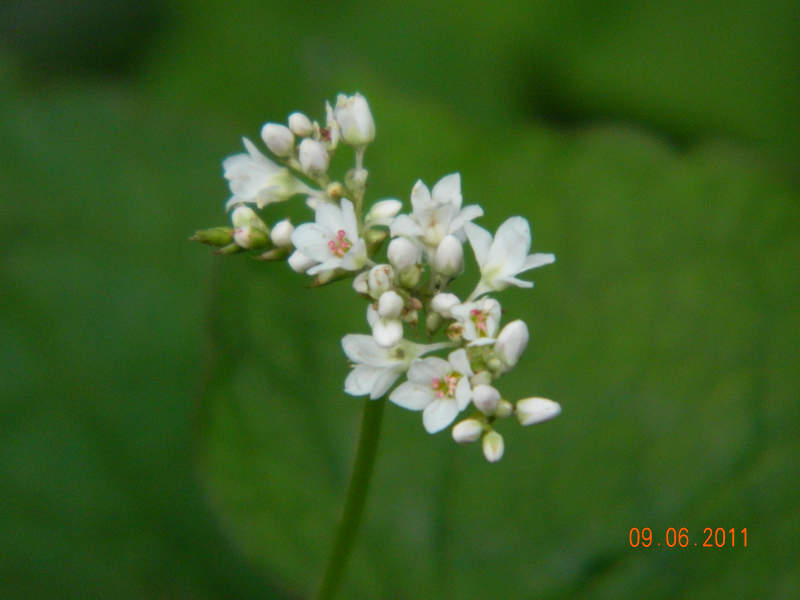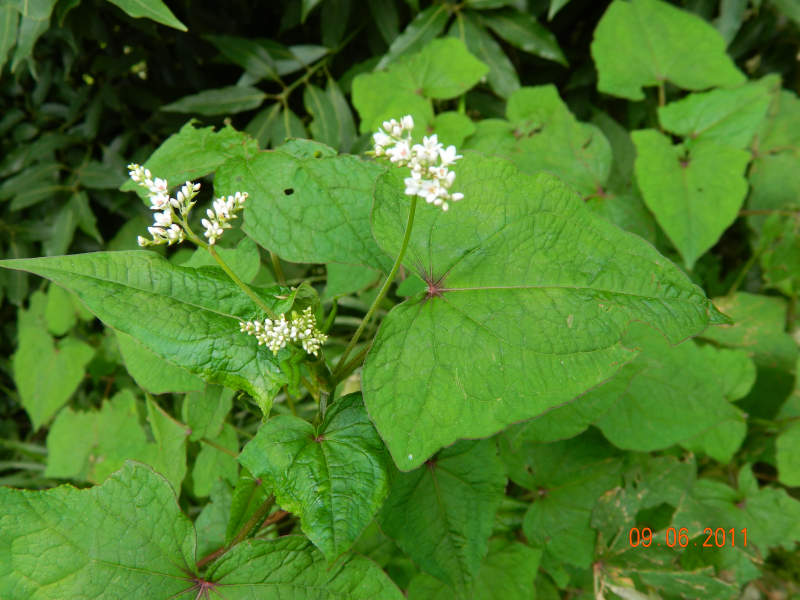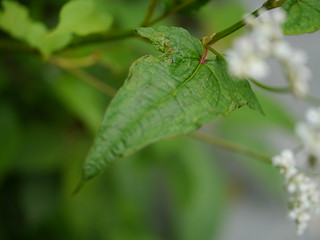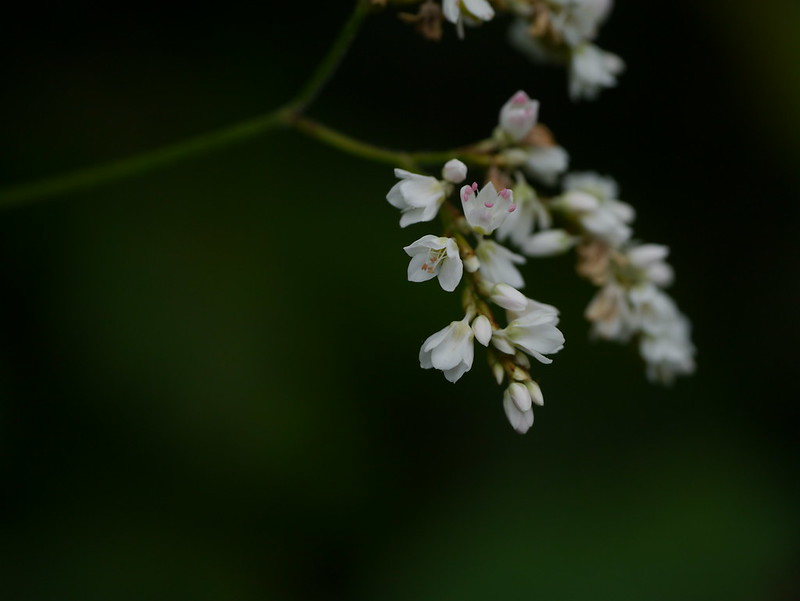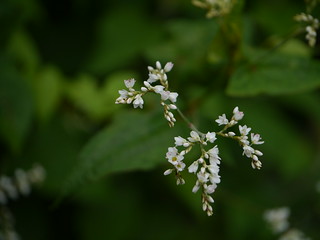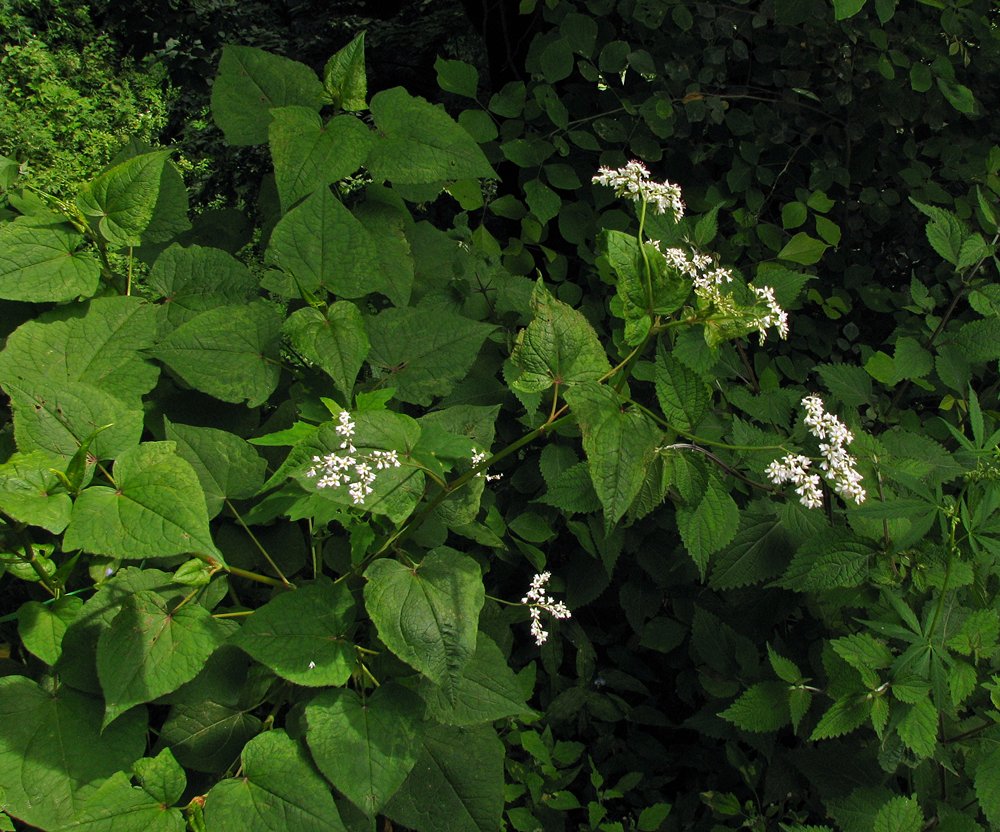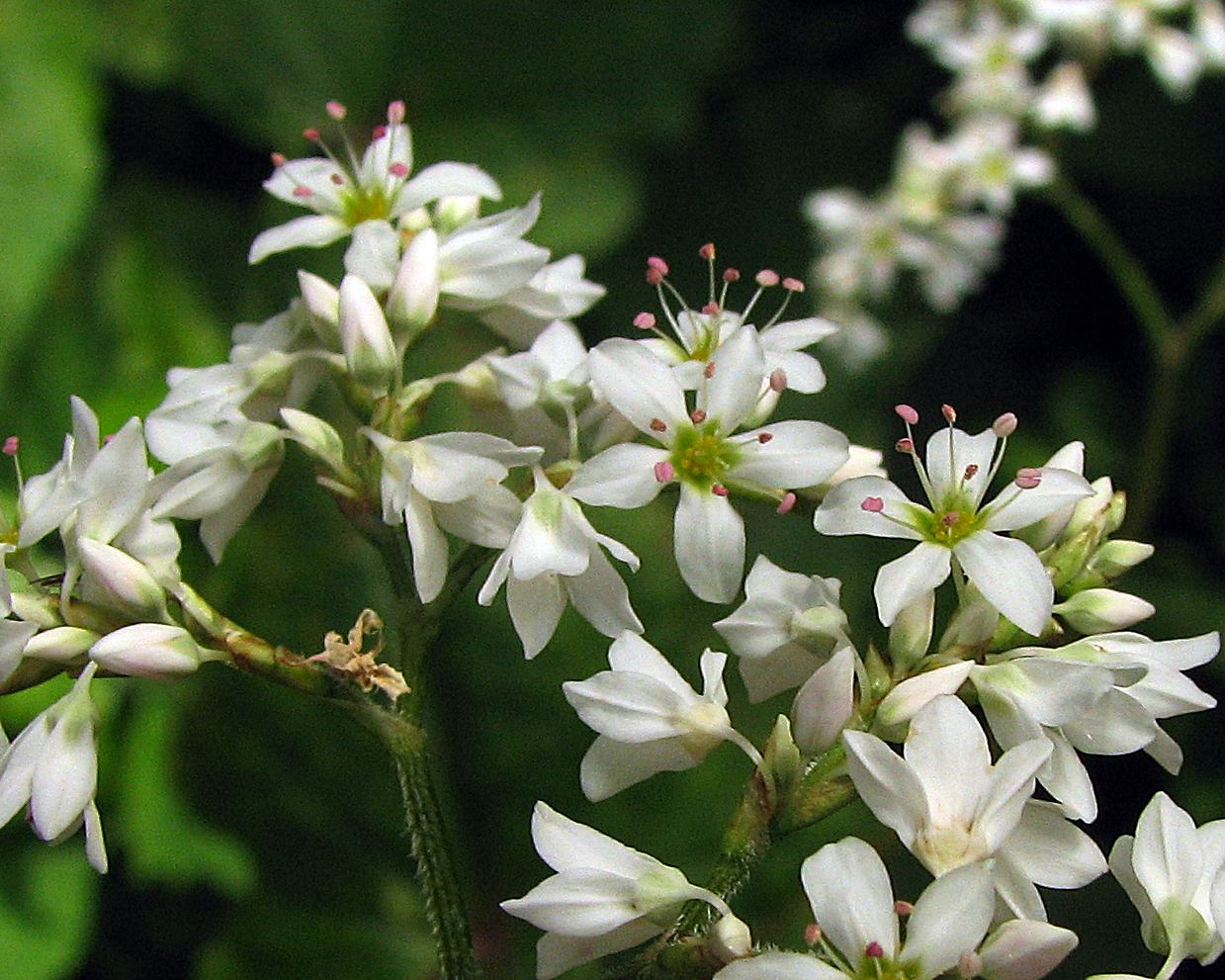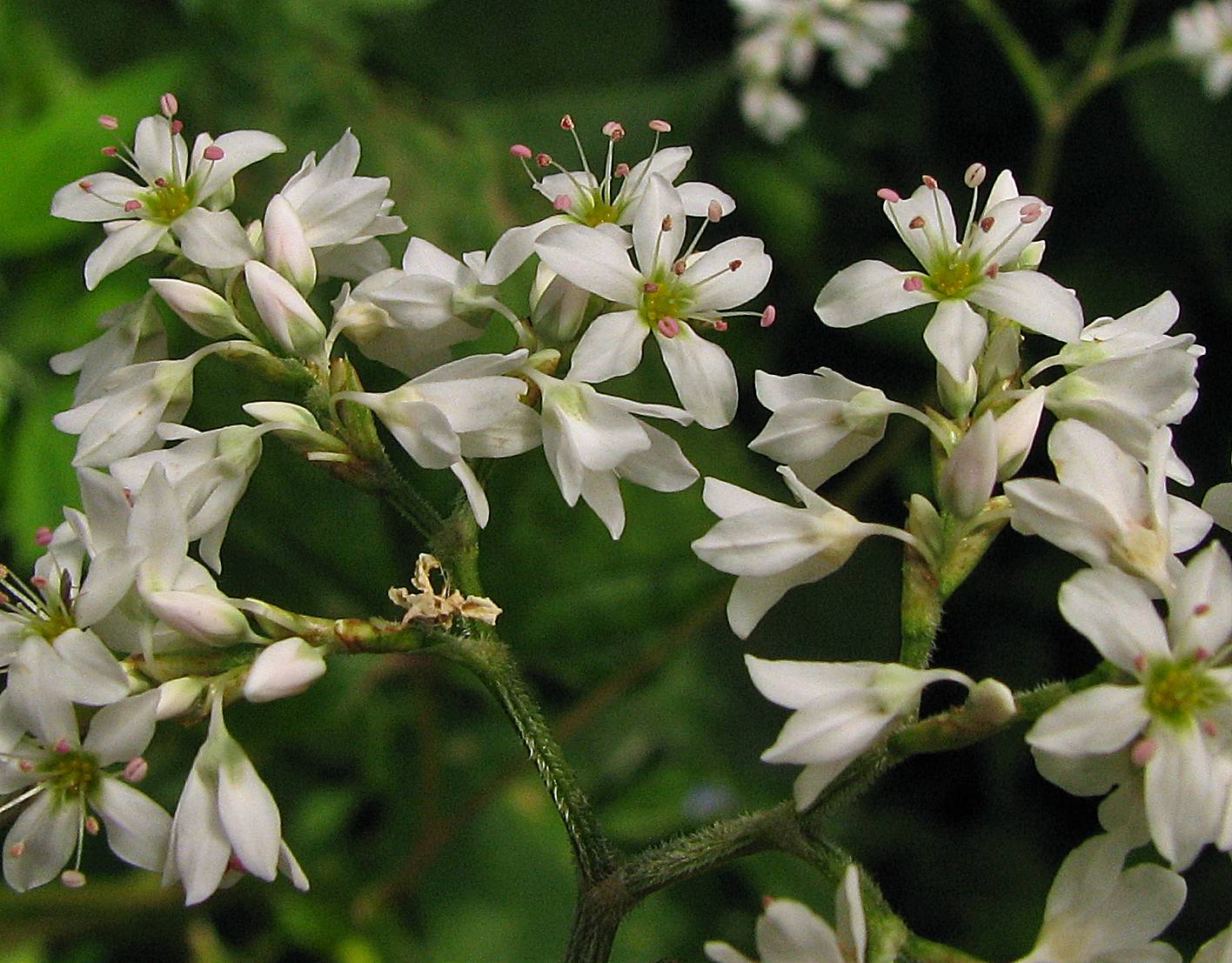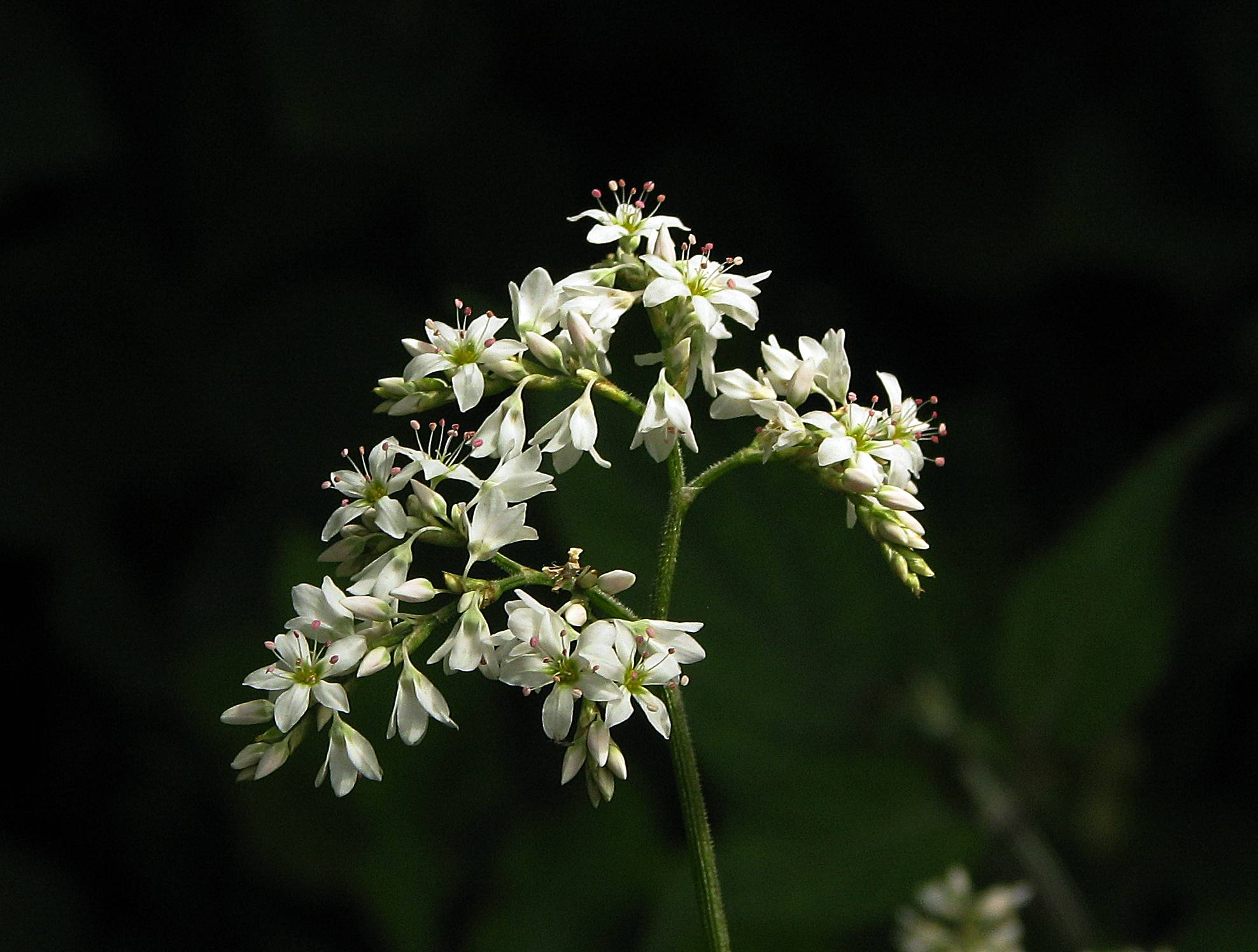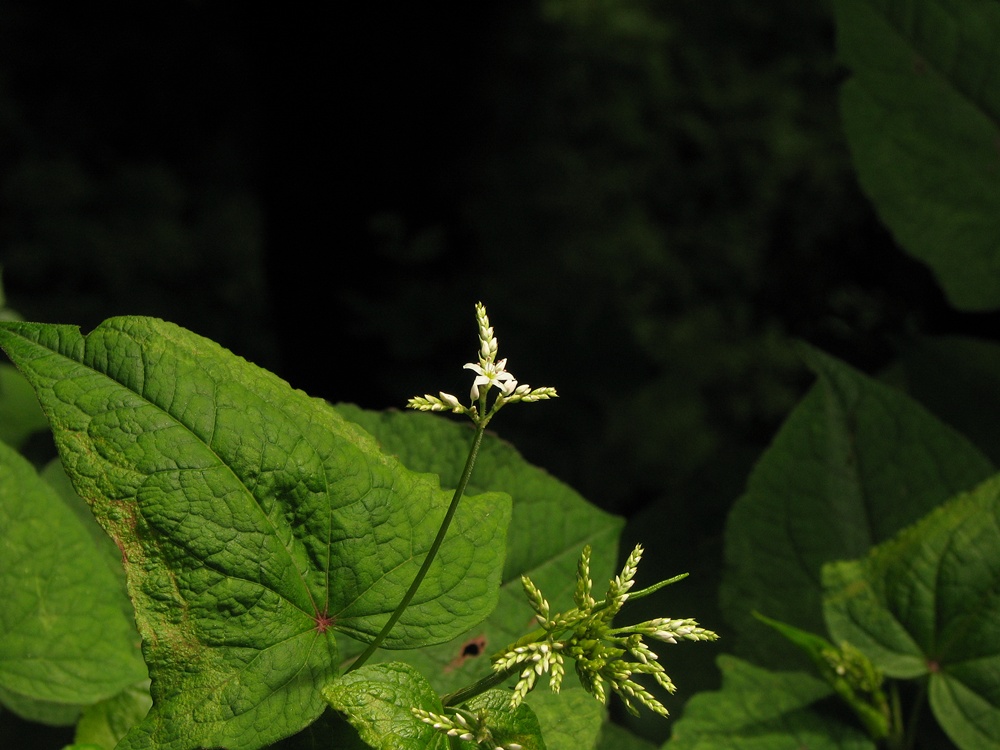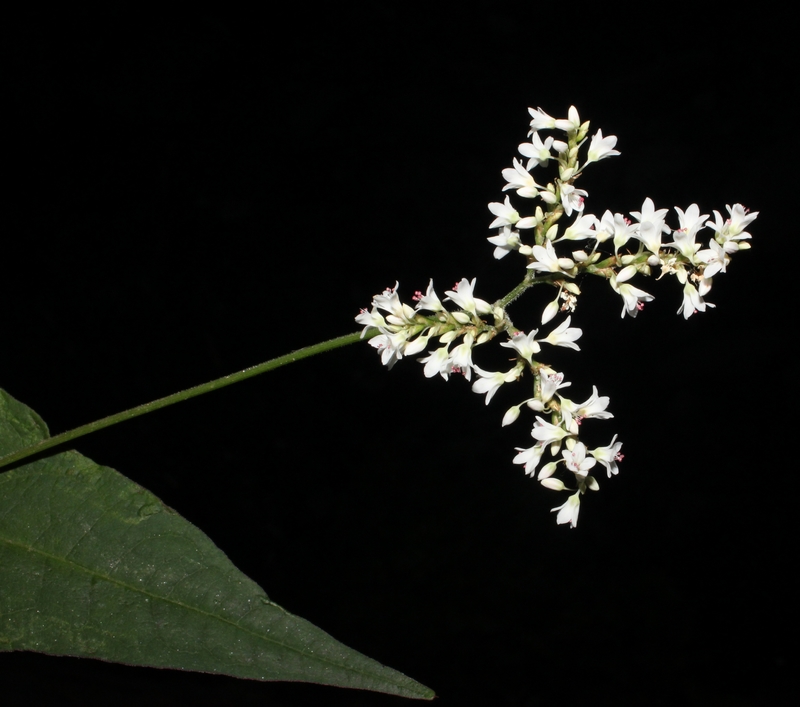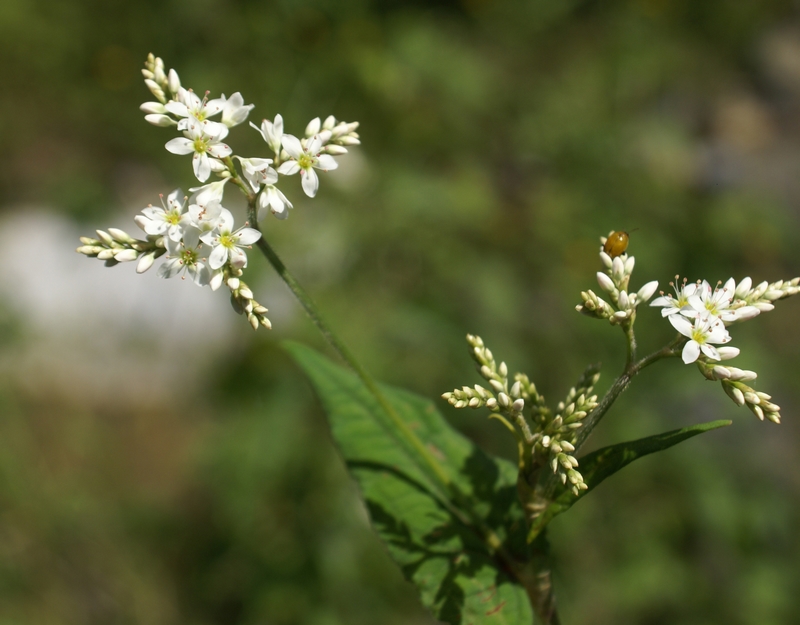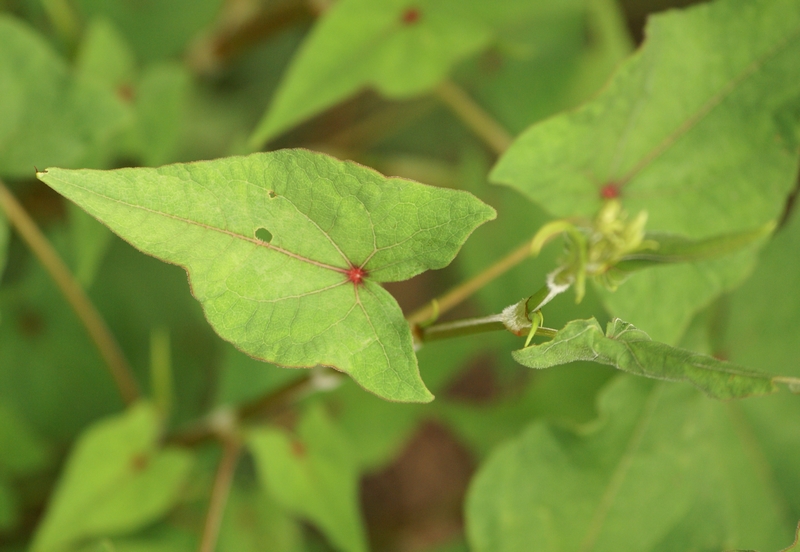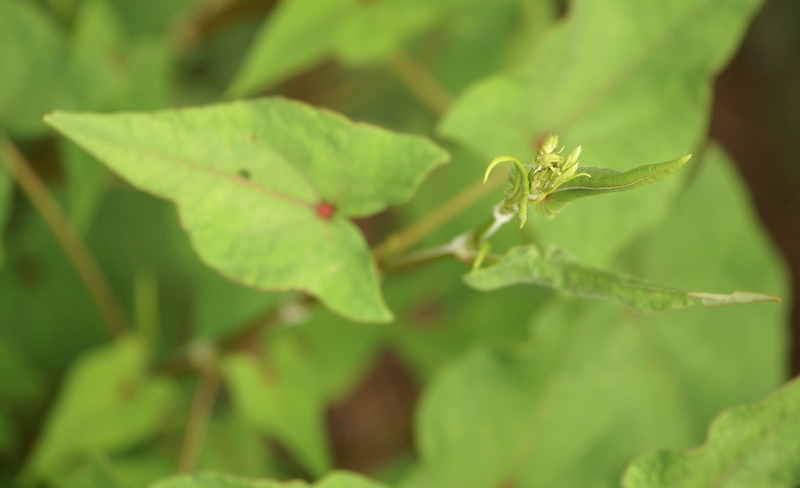|
Fagopyrum dibotrys (D. Don) H. Hara (Himalaya to China and Indo-China: Assam, China North-Central, China South-Central, China Southeast, East Himalaya, India, Myanmar, Nepal, Thailand, Tibet, Vietnam, West Himalaya; Introduced into: France, Great Britain, Japan as per POWO) Fagopyrum esculentum Moench (Introduced) (E. Tibet to China (Sichuan, Yunnan): China South-Central, Tibet; Introduced into: Alabama, Alaska, Albania, Alberta, Altay, Amur, Arizona, Assam, Austria, Bahamas, Baleares, Baltic States, Bangladesh, Belarus, Belgium, Bermuda, Bolivia, Botswana, Bulgaria, Buryatiya, California, Cape Provinces, Central European Rus, China North-Central, China Southeast, Chita, Colorado, Connecticut, Corse, Costa Rica, Czechoslovakia, Delaware, Denmark, District of Columbia, East European Russia, East Himalaya, Ethiopia, Finland, Florida, France, Free State, Georgia, Germany, Great Britain, Hungary, Iceland, Idaho, Illinois, Indiana, Iowa, Iraq, Irkutsk, Italy, Jamaica, Japan, Kamchatka, Kansas, Kazakhstan, Kentucky, Kenya, Khabarovsk, Korea, Krasnoyarsk, Krym, KwaZulu-Natal, Louisiana, Magadan, Maine, Manchuria, Manitoba, Maryland, Massachusetts, Michigan, Minnesota, Missouri, Mongolia, Montana, Mozambique, Nebraska, Nepal, Netherlands, New Hampshire, New Jersey, New Mexico, New York, New Zealand North, New Zealand South, Newfoundland, North Carolina, North Caucasus, North Dakota, Northern Provinces, Northwest European R, Norway, Nova Scotia, Ohio, Oklahoma, Ontario, Oregon, Pakistan, Pennsylvania, Poland, Portugal, Primorye, Prince Edward I., Québec, Rhode I., Romania, Sakhalin, Sardegna, Saskatchewan, Sicilia, South Carolina, South Dakota, South European Russi, Spain, Sweden, Switzerland, Tanzania, Tennessee, Texas, Transcaucasus, Turkey, Tuva, Uganda, Ukraine, Uzbekistan, Vermont, Vietnam, Virginia, Washington, West Himalaya, West Siberia, West Virginia, Wisconsin, Wyoming, Yakutskiya, Yugoslavia, Yukon, Zambia, Zaïre, Zimbabwe as per POWO) Fagopyrum tataricum (L.) Gaertn. (Introduced) (Tibet to Central China: China North-Central, China South-Central, Tibet; Introduced into: Afghanistan, Albania, Alberta, Altay, Amur, Bangladesh, Belgium, Buryatiya, Central European Rus, China Southeast, Chita, Czechoslovakia, Denmark, East European Russia, East Himalaya, Finland, France, Germany, Great Britain, Inner Mongolia, Irkutsk, Japan, Kamchatka, Kazakhstan, Khabarovsk, Kirgizstan, Krasnoyarsk, Magadan, Maine, Manchuria, Massachusetts, Michigan, Mongolia, Myanmar, Nepal, Netherlands, New Brunswick, New Hampshire, New York, Newfoundland, North Caucasus, North European Russi, Northwest European R, Norway, Nova Scotia, Ontario, Pakistan, Pennsylvania, Poland, Primorye, Qinghai, Québec, Rhode I., Romania, Sakhalin, Saskatchewan, South European Russi, Sweden, Tadzhikistan, Transcaucasus, Tuva, Ukraine, Vermont, West Himalaya, West Siberia, West Virginia, Xinjiang, Yakutskiya, Yugoslavia as per POWO) . FRLHT Indian Medicinal Plants Nomenclature Database with images/ herbarium, distribution, local names etc. :
.
Species with description & pictures in Flowers of India as on 28.4.14:
.
.
Persicaria, Polygonum, Aconogonon, Bistorta, Fagopyrum, Fallopia, Koenigia, & Rubrivena : 2 posts by 1 author.
I have updated eFI (efloraofindia) page on Aconogonon, Bistorta, Fagopyrum, Fallopia, Koenigia, Persicaria, Polygonum & Rubrivena Attempts have been made to incorporate most of the species available in India & nearby areas with details & keys directly or through links as far as possible. It’s quite possible that there may be some discrepancy in the accepted names & synonyms taken from other links. Species discussed so far in efloraofindia are given at the bottom of the page in the form of links against Subpages. On clicking them one can see all the details. If someone can provide complete list of Indian species with source references it will be wonderful. Any comments/ corrections are welcome. In my opinion most of the above genera should be treated under Polygonum sensu lato. I am working on Indian Polygonaceae but it needs thorough field work. The taxonomic complexes are to be solved with the help of SEM/Molecular studies. I have listed all Indian species but it is not yet published. Thanks a lot, …
I have taken GRIN as the basis as it relied on the latest litrature published in 2011 or 2012. Other efloras & The Plant List etc. has also been considered where ever a taxa is not available in GRIN.
As & when new findings are published it can be updated again. .
Mansfeld’s Encyclopedia of Agricultural and Horticultural Crops: (Except … By Institute of Plant Genetics and Crop Plant Research (2001)- Details- . Antidiabetic Plants in India and Herbal Based Antidiabetic Research By T. Pullaiah, K. Chandrasekhar Naidu (2003)- Details-
. Indian Medicinal Plants: An Illustrated Dictionary edited by C.P. Khare (2007)- Details-
Fagopyrum tataricum . Forest Plants of Eastern India By Amal Bhusan Chaudhuri (1993)-
. Fagopyrum (Polygonaceae) page with comparative images:
|
Disclaimer
1. For any mistake in identification or for becoming efloraofindia e-group member (for contributing towards building of efloraofindia or otherwise), pl. mail to indiantreepix@googlegroups.com or itpmods@googlegroups.com
2. For better viewing of species’ pages, colour scheme & formatting is being followed as: Description of the species, Details of other flora species on the same page, Uses/ harms, Distribution, Abundance/ Location/ Flowering time & date, Habit & habitat, Etymology & pronunciation, Other interesting information, stories etc., Others, Botanical names, Common names, Main point of discussion below, Discussion about Botanical names.
Navigation
- Award for eFloraofIndia
- Colour scheme & formatting
- Copyrights, Permissions, Citations
- eFloraofIndia appreciated
- Names of Plants in India site
- Flowersofindia site
- Posting Guidelines
- For members’ information
- Logo, Tagline, Acronym
- Volunteers required
- ‘Pitamah’ of eFloraofIndia
- ‘अजेय’ ‘Ajey’ of eFloraofIndia
- ‘Saarthi’ ‘सारथि’ of eFloraofIndia
- ‘Jewel’ of eFloraofIndia
- ‘Grassman’ of eFloraofIndia



